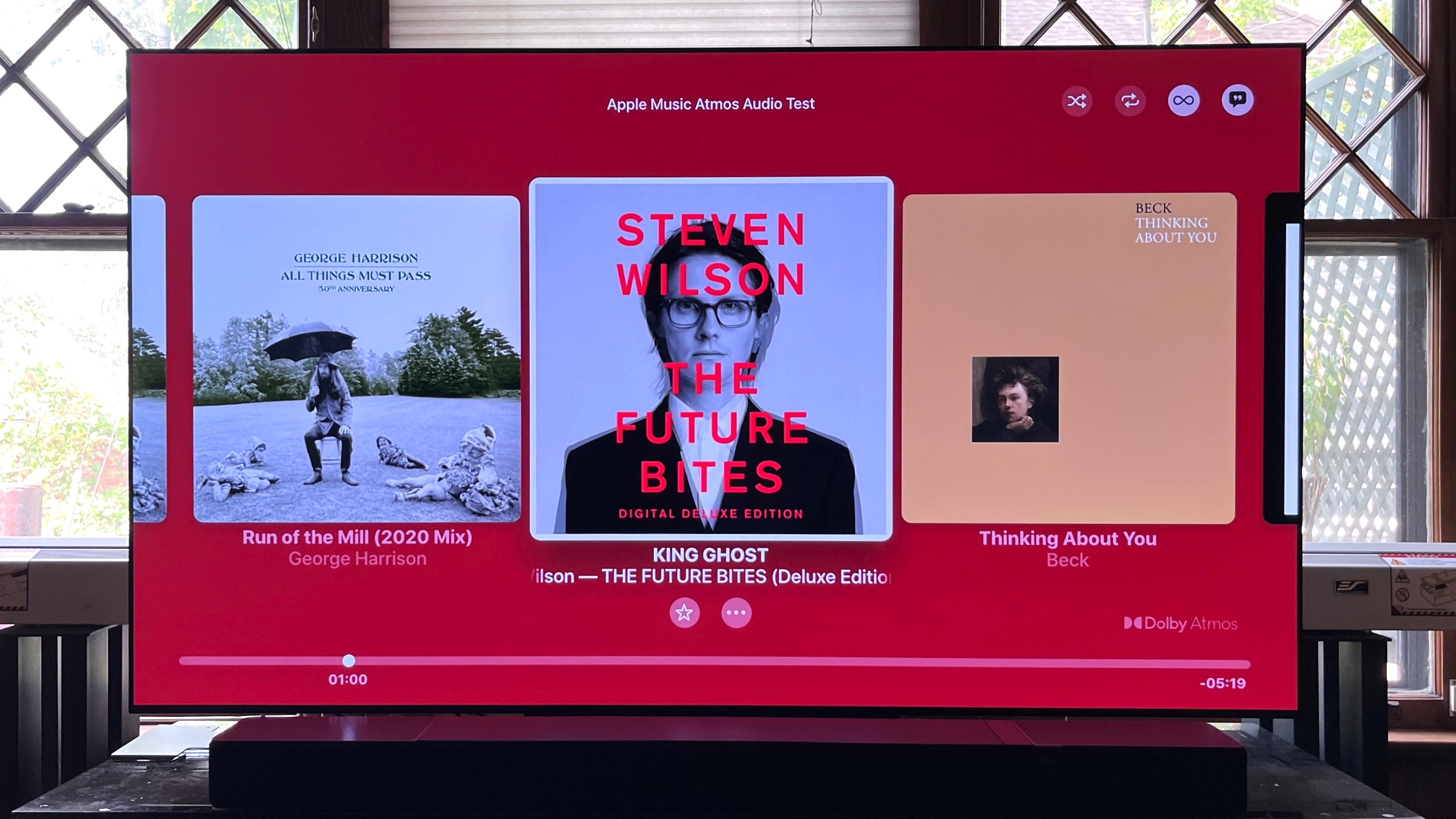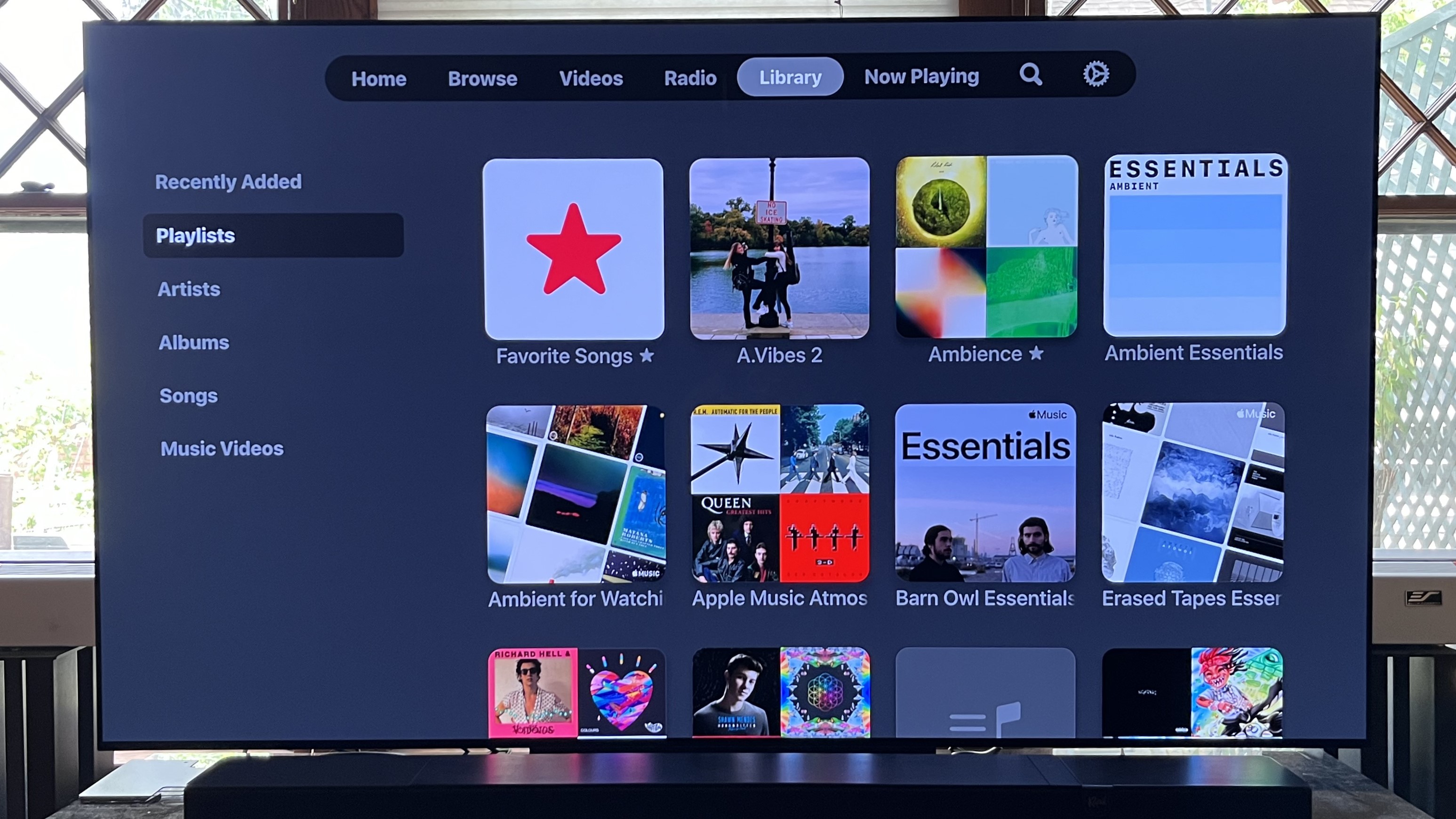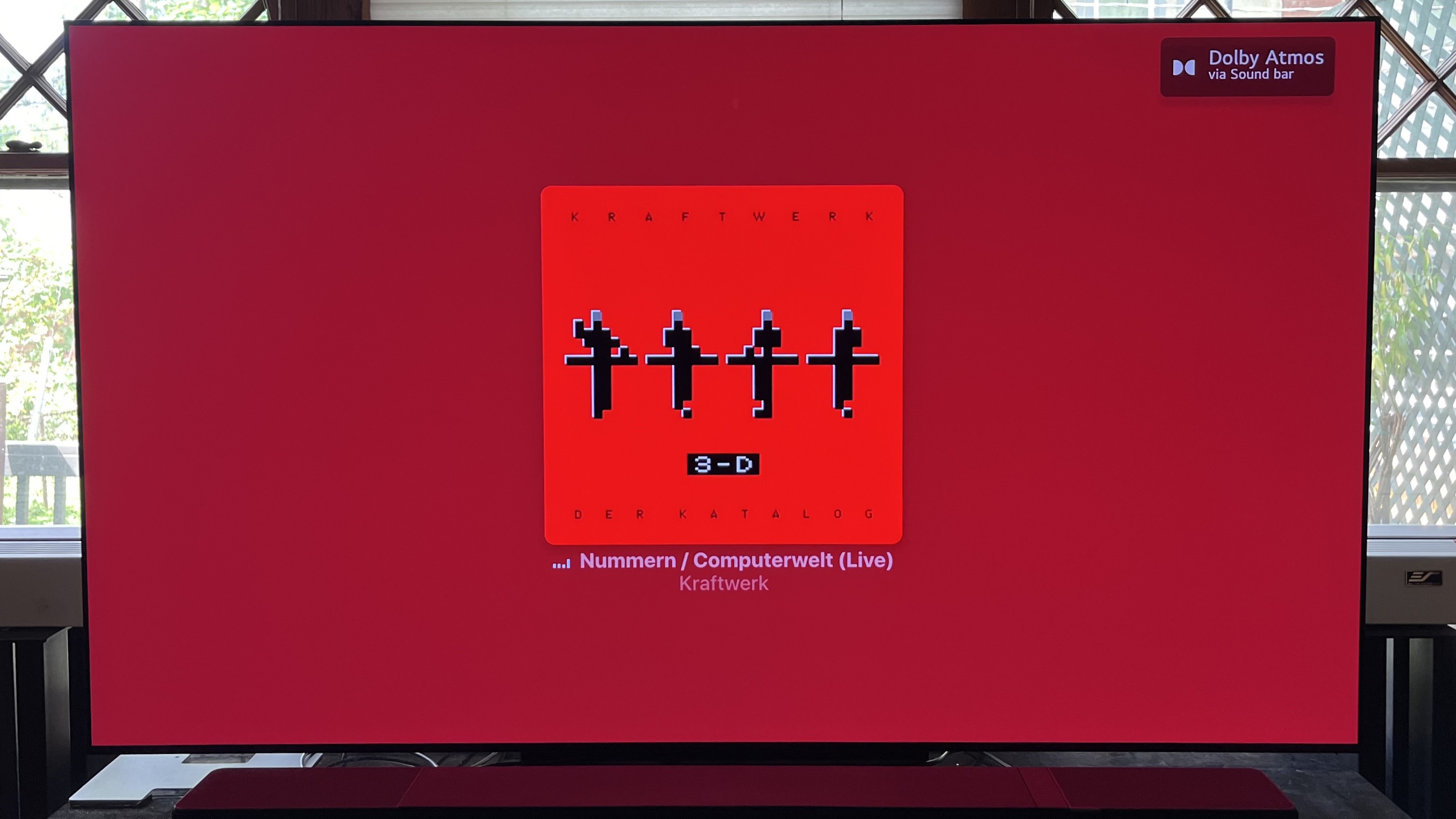
Gen Xers like me will fondly remember MTV, a cable TV channel dedicated to playing music videos covering a wide range of artists and genres. (Well, not initially, but it got better over time.) MTV still exists, though in debased form, as a repository for tawdry reality TV shows.
MTV in its heyday may have been the high point for music on the TV. The best TVs today all feature music streaming apps such as Spotify, Apple Music, Amazon Music, and even Tidal, but let’s be real – streaming music is something most people do with their phones or smart speakers, not their smart TVs.
As a possible effort to fix that situation, LG recently launched Spatial Audio with Dolby Atmos support for the Apple Music app on its smart TVs. The feature is supported on “LG OLED TV models launched from 2018 to 2024 and QNED TV models Q90T and above,” according to a press release issued by LG.
That makes LG the only TV maker to feature Dolby Atmos support for music on a built-in smart TV app. Both Amazon Music and Tidal have a fairly extensive amount of spatial audio tracks available in their streaming libraries, but music streaming is stereo-only on their respective TV apps.
LG is so eager for you to experience Atmos music on your TV that it’s offering a three-month trial of Apple Music to get you up and running. The free trial offer is available for 2018 and later LG Smart TVs running webOS 4.0 and higher, and it will last through April 2025.

Radio on the TV
I’m no stranger to listening to Dolby Atmos tracks on Apple Music, which is something I’ve done quite a bit of using the best headphones including AirPods Pro 2 and AirPods Max, but mainly with an Apple TV 4K connected to one of the best AV receivers (a Marantz, in my case) and separate speaker system, and with various Dolby Atmos soundbars.
Prior to LG’s Apple Music app getting Dolby Atmos support, the Apple TV 4K was the only way to route Atmos-encoded music streamed from Apple Music to a home theater audio system. Plenty of TVs, soundbars, and AV receivers feature AirPlay 2 wireless streaming, but audio on AirPlay is limited to two channels, with none of the spatial audio goodness that makes Dolby Atmos music so compelling.
As I’m currently reviewing an LG C4 OLED TV, I was quick to update to the latest version of the Apple Music app on the TV so I could test things out. And with an Apple TV 4K plugged into the same TV, it would be easy to switch between the LG C4’s built-in Apple Music app and the one on Apple’s streamer to see if I was getting the same Atmos experience from both.

The sweet sound of OLED
I first listened to Apple Music Dolby Atmos tracks with the LG C4’s built-in speakers to get a sense of how music sounded on the TV alone without external help. With a 2.2-channel Dolby Atmos speaker system powered by 40 watts, the C4’s built-in audio system is certainly not the most potent I’ve heard, matching the just-average sound quality of the LG C3 OLED model I reviewed in 2023.
Listening to my playlist of classic rock tracks in Dolby Atmos on Apple Music, along with new pop tracks in Atmos such as Billie Eilish’s Lunch, there was a definite sense of spaciousness to the sound that “lifted” it from the confines of the TV screen. Comparing these to stereo tracks in the Apple Music library, the stereo ones sounded flatter and less expansive.
The LG C4’s speakers definitely limited sound quality – there was little in the way of bass, and dynamics were constricted. Also, the volume range was surprisingly limited (according to LG, a “loudness normalization algorithm” is at work to match the volume level of the Apple Music Dolby Atmos tracks with non-Atmos music).
Connecting a Klipsch Flexus Dolby Atmos soundbar (full review in the works) to the LG C4 vastly improved the sound quality. (LG only mentions compatibility with specific LG soundbar models in its release, but an onscreen prompt indicated that Atmos was indeed being transmitted to the Klipsch soundbar.) But volume levels still were relatively low, which kept me from hearing the full dynamic punch I know the tracks in my playlist contain.
Switching over to the Apple Music app on the Apple TV 4K as my Dolby Atmos music source, the volume range greatly increased and I could now play tracks at levels that would stir up some excitement. Listening to Kraftwerk’s Nummern/Computerwelt (Live), the synths floated above the screen while the sampled vocals zipped around in a spatially engaging manner. This was Atmos music all right. And when I played another track, King Ghost by Steven Wilson (technically not classic rock, but classic in my book), the sound had a towering, expansive quality, with the ethereal vocals in the chorus floating well up and into my room.
The clear takeaway from my Dolby Atmos music listening session with LG’s Apple Music app and the Apple Music app on the Apple TV 4K is that LG’s loudness normalization algorithm is working aggressively to restrict volume levels – possibly to keep listeners from damaging their TV’s built-in speakers. The Apple TV 4K routed through the LG TV to an external soundbar delivered a superior Atmos listening experience, and while it was interesting to hear Dolby Atmos music coming directly from a TV, I won’t be giving up my Apple 4K streamer any time soon.







